Even 6-figure BMW 750iXL halted by ice, tires
By John Gilbert
Remind me, someone, to plead with the press-fleet powers at BMW to send me the new BMW 750iL for a second test-drive week, after the persistent snow and ice of this never-ending winter finally cash in their chips. As it is, the chance to experience the many wonderful features of the car, which is BMW’s flagship of luxury and class, was undone by a couple of snowstorms and some easy-slip tires.
It’s not as though I didn’t get a chance to test the 750 extensively. All the things I experienced with the car were very impressive, even for a car whose sticker price topped the $118,000 mark. As usual, the lofty price of a BMW can also be said to be worth it, based on the level of technical refinement and engineering brilliance. This car had the 4.4-liter V8, with more power than any normal driver could ever need, and all the luxury features imaginable, and a few beyond imagination.
But one characteristic out of the car-maker’s control was a major flaw, in the Great White North. The tires BMW put on the car were Pirelli P7 Cinturato by designation, and I know from past experience they are among the very best tires in the world on dry pavement, and for high-speed maneuvering. My past experience with those tires in Minnesota winter driving is less extensive, limited to the BMW X1 crossover, and in both cases, the low-profile beauty of those tires, and their ability to stick like glue to a dry track at high speed, became the farthest thing from a driver’s mind after a snowstorm.
As i was driving the 750, I couldn’t help but be reminded of the huge snowfall that hit the Northeast back in late February, I think it was, burying much of Massachusetts, New Hampshire and points north under 27 inches or snow of snow. A storm of that magnitude would be incredible wherever it happened, but it wouldn’t have commanded the national news and weather programs on network and satellite. Every time you turned on the television, you couldn’t escape the newscasters, inside their parkas, doing their obligatory reports while standing outside during the most intense parts of the blizzard.
A woman on either CNN or The Weather Channel was in a convenience store/gas station parking lot, and the swirling snow in the background made it appear to be on the edge of the Arctic Circle. She noted a car behind her spinning helplessly and unable to get out of the unplowed lot. Finally, two or three large fellows pushed and pushed and finally the free-spinning Acura TL got enough momentum to disappear out on the streets. Moments later, a subcompact, possibly a Nissan Versa or Toyota Yaris, came around the gas pumps and went by, covered with snow, and also spinning its front drive-wheels. “Here comes a little tiny car,” she said, “which, of course, will have no chance getting through this snow because it’s so light.” With that, the little car kept on churning and made it on out of the lot.
Tires matter. True, they matter for high-performance speed and cornering, and they also matter to the mainstream for long wear and smooth cruising. But they matter most in order to propel your car safely through the worst of foul-weather storms, where going off the road or being unable to get to your destination can leave you marooned. And the tires that work in one extreme condition are completely unsuited for the other extreme. Being stationed in Northern Minnesota, where such winter storms are common — and seem to be never-ending well into April of this particular year — even untrained drivers are aware of the need to get traction in wintry driving, which is mandatory for getting to work, if not simple survival. For the rest of the world, or our country, the masses may be totally unaware of the importance of worthy all-season or snow tires. And national reports on television that are erroneous don’t help.
The Acura TL in the live shot, for example, has front-wheel drive, but may well have had the factory-issue Michelin tires that are so good in dry weather and for long wear, but have a hard compound that refuses to earn traction on ice or snow. And the woman’s editorial comment about how “little cars” have no chance of getting through prove that not only experience but a shred of common sense is important before claiming that a cars size and weight is all that matters. The small car in question had front-wheel drive too, and even though it’s light, it has its weight centered over the drive wheels, and with adequate all-season tires it can keep churning on icy roads or deep snow.
I’m not blaming The Weather Channel for sending out an attractively snowbanked, on-the-scene reporter who was unaware that the right tires can make a front-wheel-drive car get through such conditions, regardless of its weight, but to issue such misleading statements is as ill-advised as it would be to ask me for an impromptu comment on the difference between an occluded front and that Alberta Clipper coming down from the northwest. Read more
Grand Caravan achieves objectives better than ever
By John Gilbert
It’s time for minivans to rise up and claim their rightful place at the top of the family vehicle chain.
You’ve got to pity the poor minivan. Everybody who owns one appreciates it, to the point of wondering how their families could ever get along without it. But it is universally scorned, to the point of acting as though they’d never consider buying one, and even some of those who own them keep it hidden and only take it out when the kids need to haul a hockey or soccer team full of buddies to the next practice or game.
It wasn’t always that way. When the Dodge Caravan was at its peak, it seemed as though everybody had one and everybody who did loved to show them off. Essentially, minivans were the vehicles that drove station wagons to extinction. But after several decades of loyal, trustworthy, and efficient transportation, in all weather, minivans also led directly to the derision that might be called “Soccer mom syndrome.” Minivans didn’t seem all that macho, so men would always say they got the minivan for their wives, who had to haul kids to practices and games.
Meanwhile, sport utility vehicles became the vehicle that did to minivans what minivans had done to station wagons, and it although minivans kept selling, they almost had to be hidden over in the dark corner of the dealership, or left on the back lot, and delivered in a plain, brown wrapper. Read more
Mazda6 adds style, Skyactiv for 2014
By John Gilbert
The Mazda 626 has always been a worthy midsize entry, just as dependable, and sportier, though less-heralded, than midsize segment leaders Honda Accord, Nissan Altima and Toyota Camry. When it was renovated into the Mazda6, it moved higher on the artistic list and had an edge in sporty handling, but still didn’t match the hot-selling numbers of its competitors. Its last restyling,took the Mazda6 to a much more flowing look, although like the Accord it became large enough to be too large for some midsize buyers.
For 2014, Mazda has introduced another all-new Mazda6, and it appears to connect on all (four) cylinders. It has outdone all previous models in styling and technology, with styling that has a strong resemblance to recent auto show Mazda concept vehicles, and performance from its Skyactiv powertrain technology.
The styling, Mazda officials say, captures the muscular energy of a lion or cheetah as it tenses up to pounce, a compelling idea that inspired the Kodo concept car. The tight lines are attractive, none moreso than the contour that arches above the front wheel openings before blending into the flanks.
Its engineering starts with Skyactiv, which has made Mazda the first Japanese manufacturer to discard its well-engineered array of engines in favor of entirely revised engine technology, focused on the future while easily topping current demands.
A recent test-drive of the 2014 model in the later stages of Minnesota winter indicates that the front-wheel-drive Mazda6 has made direct hits on its multiple targets of style, comfort, versatility, performance and technology. Amazingly, if the test vehicle I drove had listed at $30,000, I would have thought it was worth it; instead, it listed for just over $20,000 — a remarkable bargain.
As for sales volume, Mazda is a quick welterweight boxing against a ring-full of heavyweights. Toyota, Honda and Nissan are focused on massive sales, while Mazda seems content to be a niche player, focusing on changing directions more efficiently to be stay after its image of technology, performance, and the now-familiar “zoom-zoom” philosophy of building cars that are fun to drive. Read more
Badgers lead WCHA ‘Final Six’ into NCAA
By John Gilbert
Five of the six WCHA teams that were selected to play in the 16-team NCAA tournament this week — St. Cloud State, Minnesota, North Dakota, Denver, and Minnesota State-Mankato — are primed to get a second chance to regroup and show their best stuff in the win-or-go-home NCAA, with hopes a national championship might be the pot of gold at the end of the rainbow.
But the sixth team, Wisconsin, is so used to playing, and succeeding, with the same win-or-else obstacle, the Badgers would just as soon have nothing change.
Just like in the NCAA field, only one team can win the championship in the WCHA Final Five, and that team was Wisconsin, which continued its upward surge that has carried the Badgers since the end of November. After starting 1-7-2 in their first 10 games, the Badgers have soared to a 21-5-5 mark, for a 22-12-7 overall record as they embark on a very challenging NCAA schedule.
Freshman Nic Kerdiles, who formed a strong connection with linemate Tyler Barnes as they finished 1-2 in Final Five scoring — Kerdiles 3-3–6 and Barnes 4-1–5 — had an ineligiblity issue with contact from an agent after being drafted on the second round by Anaheim, and missed the first 10 games. Ten games was precisely when the Badgers went 1-7-2, so they are 22-12-7 with him in the lineup. They flank center Mark Zengerle on the top line that suddenly has emerged as a dangerous unit, every shift.
Behind their play, and that smothering defense, the Badgers rose form a three-way tie for fourth, fifth, and sixth in the WCHA to claim the automatic slot in the NCAA field by winning the Final Five, and coach Mike Eaves and his players knew that they came to the Xcel Energy Center in Saint Paul, Minnesota, with the task of winning three games in three days, or being done for the season.
Eaves was asked if this, because of the slow start, has been his most challenging season. “Challenging?” he said. “I’d say it was one of the most enjoyable.”
The start was puzzling, he acknowledged. “We weren’t playing terrible hockey,” Eaves said. “We were playing well, we just weren’t coming up with the big goal when we needed it. I was just trying to say the right things to these young men to keep them coming back.”
There was no question they were coming back. Captain John Ramage said: “At the start, even though we didn’t win, we knew exactly what kind of team we had. If we didn’t feel that, we wouldn’t be here rightd now. Our confidence level is high, and we’re riding high — we just want to keep it going.”
Wisconsin is in the Northeast Regional, as the tournament’s No. 14 seed, where the first opponent is Hockey East power Massachusetts-Lowell, the No. 3 overall seed, in a 3:30 p.m. game on Friday at Manchester, N.H. The other teams in the Northeast are No. 7 New Hampshire, also from Hockey East, against Denver, No. 9, from the WCHA, at 7 p.m. The winners collide on Saturday, at 5:30.
The other WCHA entries are also spaced, two each, in the West Regional at Grand Rapids, Mich., where Minnesota, No. 2 overall, opens the tournament at 1 p.m. Friday against No. 15 Yale from the ECAC, with No. 8, North Dakota, facing No 10 Niagara at 4:30 p.m. Those winners play Saturday at 3 p.m.
In the Midwest Region, at Toledo, Ohio, games begin on Saturday, with St. Cloud State, No 13, playing No. 4, Notre Dame of the CCHA, at 12:30 p.m., and MSU-Mankato, No. 11, facing No. 5 Miami at 4 p.m., with the winners meeting Sunday at 3 p.m. for a Frozen Four berth. The East Region, the only one where no WCHA team is slated, also starts Saturday, with No. 1 overall Quinnipiac facing No. 16 Canisius at 4:30 p.m. in Providence, R.I., and No. 6 Boston College, meeting No. 12 Union at 8 p.m. Those winners play at 5:30 p.m. Sunday.
As far as using the NCAA tournament to make up for WCHA playoff disappointments, the rest of the entries have a lot of challenges. St. Cloud State won the regular season title, although they were tied on the final day of the season by co-champion Minnesota. Both flopped after sweeping two games to reach the Final Five, with byes into the semifinals. St. Cloud State fell victim to Wisconsin, which pinned a 4-1 defeat on the Huskies. Minnesota was stymied by red-hot Colorado College, which knocked out favored North Dakota 4-3 in overtime, then beat the Golden Gophers 2-0.
As the top seed in the WCHA, the Huskies incomprehensibly were victimized by the NCAA’s computer system, relegated to the No. 13 seed, while co-champ Minnesota is No. 2, after ranking No. 1 a week earlier. The Huskies have a consistently solid team that plays well at both ends of the rink, but they seemed to fall victim to Wisconsin’s tournament rhythm. After winning their first WCHA league title in their final year in the league, the Huskies need no more incentive than to realize they worked six months to prove they are the best team in the WCHA, then they got far less respect than the league champs from the CCHA, Hockey East, or the ECAC.
Meanwhile, nobody has more ground to make up than Denver, which was upset by Colorado College after winning the first game, then losing twice at home to the Tigers, who were, arguably, the hottest team in the Final Five but knew all along it was win the title or else. Denver, it must be noted, has in its history an NCAA title after losing in the WCHA first round but maintaining a high enough rank to still make the NCAA, rested and ready.
North Dakota, stung by the overtime upset loss to CC in the Final Five quarterfinals, had won three straight Final Five titles, and ranks with the Gophers as co-favorites at Grand Rapids, where they could meet for the final time as WCHA rivals, with both teams going to other conferences next fall — Minnesota to the Big Ten and North Dakota to the National Collegiate Hockey Conference.
And Minnesota State-Mankato had a rough night in a 7-2 shocker against Wisconsin in the Final Five quarterfinals. The Mavericks, with a solid team and the league’s top goaltender in freshman Stephon Williams, had a miserable night and will welcome the reprieve of the NCAA selection — even though most hockey observers are completely overlooking their chances against powerful Miami.
All those five other teams could pile up a mountain of alibis and excuses for their shortcomings in the Final Five, but only Wisconsin can look back at last weekend knowing they have climbed to the top of one pinnacle, while looking ahead to the next one.
“It didn’t look like that early,” said Badger coach Eaves. “We had injuries, ineligibilities, an assistant coach leaving, and a problem scoring goals. But we are what we are today, because of those lessons we learned back then.”
After their terrible start, which included losing twice to Colorado College in Madison, tying and losing at Minnesota, then losing twice at MSU-Mankato, the Badgers tied and won at Denver, then tied Michigan Tech twice. Then Wisconsin took off, winning seven in a row. Thereafter, the Badgers never lost two games in a row, splitting nonconference games with Miami, sweeping Alaska-Anchorage, tying and losing at North Dakota, tying and winning against Bemidji State, splitting with arch-rival Minnesota, splitting a nonconference pair with Penn State, then sweeping at Nebraska-Omaha, and splitting with St. Cloud State.
Still, the Badgers have hit their peak in playoffs, sweeping Minnesota-Duluth, then beating Mankato, St. Cloud State, and Colorado College in five games that have seen them outscore those foes 21-7, as goaltender Joel Rumpel and the stifling Badger team defense has prevailed.
“They play a different style, and they’re so dialed into it, we were always a step behind,” said CC coach Scott Owens, of the Badgers.
The Broadmoor Trophy, given to the Final Five champion, is the last one Wisconsin will be playing for, and Eaves said, “It’s very special, and we will hold it in high esteem.”
But after his Badgers had won it, and were taking turns holding it high overhead on the Xcel Center ice, Eaves stood smiling on the bench, then walked down the runway to the dressing room, rather than joining them on the ice.
“That’s their moment,” said Eaves. “Watching them get together afterward was really fun, but it’s their moment.”
WCHA sends 6 to NCAA in Final Flourish
By John Gilbert
The Western Collegiate Hockey Association is not dying after this season, it just seems that way. The most successful conference in any sport is exploding to form three different leagues, while the rival CCHA is also going to be shattered, with the remnants joining what will remain of the WCHA to make up the WCHA as of next fall.
To briefly explain: Minnesota and Wisconsin were forced to join Michigan, Michigan State, Ohio State and Penn State in a new Big Ten hockey conference. The Big Ten says any time as many as six of its member schools play a sport, that sport must be a Big Ten league. With Penn State starting hockey — and the Nittany Lions upset Wisconsin in Madison for a split late this season! — that was the sixth Big Ten team. That caused some unrest and instability within the remaining WCHA entries, and North Dakota and Denver led an insurrection to start a new league.
Denver and North Dakota coerced Colorado College, Nebraska-Omaha, and Miami of Ohio to start the new National Collegiate Hockey Conference (NCHC), and UMD had to choose quickly, and jumped on board. That made for a six-team elitist league, which added St. Cloud State and Western Michigan to make eight.
That leaves Bemidji State, Minnesota State-Mankato, Michigan Tech, Northern Michigan, Lake Superior State, Alaska-Anchorage, Alaska-Faribanks, Bowling Green, and Ferris State in an interesting league, and Alabama-Huntsville joined as well, making 10. That group will still be called the WCHA, which is great, because historically it will give the new league a standard to strive for.

CC's Rylan Schwartz (13) set up Charlie Taft for a goal on Joel Rumpel, but Wisconsin won the WCHA title game 3-2.
All of that means that the WCHA’s Final Five last weekend was loaded with historical significance. And it was also loaded with surprises and upsets. Wisconsin beat Colorado College 3-2 in the championship game, which can be called the “final Final Five final.” The title game had added drama, because all the computer calculations said that while the winner would get the automatic berth in the NCAA tournament’s 16-team field, the loser would not make it. Both finalists had played two amazing games to reach the final. Wisconsin stunned MSU-Mankato 7-2, then shocked No. 1 seed St. Cloud State 4-1, while Colorado College — which finished eighth in the regular season WCHA race — knocked off North Dakota in overtime, then played a magnificent game to beat Minnesota 2-0. Rarely does a team succeed having to win a quarterfinal, the beat a bye team in the semifinals, and then win the third game in three days. But in this case, both teams had to play their third game in three days, and because CC’s games were far more grueling than Wisconsin’s, the Tigers seemed more worn out in the final, but played with great heart, and the spark of Rylan Schwartz, to challenge the Badgers. Wisconsin obviously deserved to reach the NCAA, having eliminated UMD in two straight, then Mankato, St. Cloud and CC.
The Badgers, with their shut-down style and opportunistic offense, have freshman Nic Kerdiles and Tyler Barnes as first-team wingers who have amazing chemistry for finding each other with passes. As the 14th seed, lowest among WCHA entries, the Badgers are a legitimate threat to win the Northeast Regional and make a run at the NCAA title.
But the most impressive team in the Final Five was Colorado College, both for the grit and tenacity they showed in beating Denver by winning two games after losing the first, and then taking out North Dakota in overtime, but mostly for the flawless, free-flowing offense that left the Golden Gophers looking more befuddled than any co-champ should look in the 2-0 semifinal.
The worst call of the tournament came in the first period of Wisconsin’s 4-1 victory over St. Cloud State. A 2-on-1 rush, with a shot from the right side blocked by Badger goalie Joel Rumpel, with the rebound landing in the slot. As Nic Dowd shot the rebound toward the open goal, Rumpel turned from the congestion of the shooter and his defenseman, pulled his stick free, and whirled to try to get in the way of Dowd’s shot. No chance. So Rumpel let his stick slide, knob-first, from his grasp, diagonally across the crease toward the left post. Incredibly, Dowd’s shot hit the handle of the stick and slid just centimeters wide of the left pipe. Had Dowd scored, St. Cloud would have led 2-1 at the second intermission.
St. Cloud State coach Bob Motzko discussed it with the referees, who agreed to check with Greg Shepherd, supervisor of officials, upstairs manning the video replays. The rule book doesn’t say such a play is a penalty — it is a goal, anytime a player throws or slides his stick to prevent the puck from obviously going into the goal! AAfter repeated viewings, the ruling was no goal. I asked Shep about it, and he said one replay showed that Rumpel’s stick hit his teammate’s skate, which knocked the stick out of his hand, meaning he didn’t throw it. We had a pretty good argument about it, but I saved my coup de grace for the end. In the interview room, Rumpel said: “I guess I kind of dove and it hit the knob of my stick, and knocked it out of my hand. But the puck just skirted wide.” For clarification, I raised my hand and asked: “Are you saying another player knocked the stick out of your hand?” And Rumpel said: “No, nothing hit my stick, except the puck.” I told Shepherd he had to call it the way he saw it, but the goaltender himself acknowledged he threw his stick at the puck, and was quite jovial about accepting credit for the accuracy of his “Olympic Stick Slide.”
Badger coach Mike Eaves said, simply: “Obviously, it was the turning point in the game.”
SIX WCHA TEAMS MAKE NCAA
The last hurrah for the WCHA as we know it should be a good one, because six WCHA teams made the 16-team NCAA field, which begins with four regionals this week. On Friday, the show starts with Minnesota facing Yale at 1 p.m. in Grand Rapids, Mich., followed by the North Dakota-Niagara game at 4:30. Don’t look ahead, but very likely we’ll see a Minnesota-North Dakota showdown at 3 p.m. Saturday in that West Region final — two teams that are leaving the WCHA for new horizons next year.
The Northeast Regional follows with Wisconsin facing Massachusetts-Lowell at 3:30 in Manchester, N.H., followed by Denver facing New Hampshire at 7 p.m. Those winners meet at 5:30 p.m. Saturday.
The other two regionals are Saturday-Sunday, with the East Regional pitting top overall seed Quinnipiac against Canisius in an odd match between two programs that were basically not on the horizon of elite teams three or four years ago. That will be at 5:30 p.m. Saturday in Providence, R.I., and will be followed at 8 p.m. by Boston College facing Union. Those winners play at 3 p.m. Sunday in the only region that doesn’t have a WCHA team, because the NCAA will do anything to avoid the situation a few years ago when all four Frozen Four teams were from the WCHA. Frankly, it was no fun; more like a rerun of the WCHA Final Five.
The Midwest Regional in Toledo has Notre Dame facing St. Cloud State at 12:30 Saturday, followed by Miami facing MSU-Mankato at 4 p.m. The winners meet for a Frozen Four berth at 3 p.m. Sunday. That’s an interesting region, because Notre Dame and Miami, both leaving the CCHA, will be favored over the 11th-seeded MSU Mavericks, and the No. 13 seeded St. Cloud State Huskies. But both the Mavericks and the Huskies have dangerously talented teams, and have the unique opportunity to make up for disappointing showings in the Final Five. And upset or two there, wouldn’t surprise me.
One thing about the NCAA’s convoluted ratings and computer calculations that has bothered me for a couple of decades. All of that computer stuff and Pairwise calculations are impressive. But the NCAA should be made aware of this thing each league has, called “Standings.” Nonconference games are important, but they are too important with the computer involvement. Used to be that teams could play a few back-up players in nonconference games; now they have to play them for keeps. To me, the conference standings are all-important, and should be given extra weight in the computer input. In the WCHA, St Cloud State was caught and tied for co-championship by Minnesota in the last game of the season, but St. Cloud State was No. 1 seed on tie-breakers. My plan would have each league submit its standings — including league tournaments, if they wish. In the WCHA, St. Cloud State would rank No. 1, Minnesota No. 2, North Dakota No. 3, etc. That’s the way they finished in their tough and exhausting league race. There should be no computer that can say that Minnesota, North Dakota, Denver, and MSU-Mankato should be seeded higher than St. Cloud State — the league’s top seed.
It would, however, be great to see the WCHA as we know it supply a couple of Frozen Four teams and win the national championship as its own going-away gift to the WCHA.
GOPHER WOMEN WIN TITLE AT 41-0
The University of Minnesota women’s team completed a pressure-filled playoff by loosening up and playing its game to beat Boston University 6-3 in the NCAA championship game Sunday at Ridder Arena. A sold-out Ridder Arena, with 3,500 fans jammed in, saw the Gophers become the only women’s team to ever go all the way through the season undefeated and untied, at 41-0. Their winning streak is now at 49 and counting, with their second straight title. Amanda Kessel, the Kazmaier Award winner, finished a brilliant season with two goals and two assists, giving her 46-45–101 for the season.
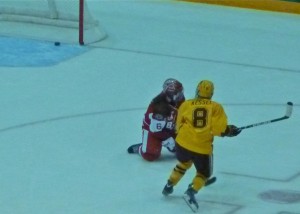
Amanda Kessel's 2nd goal, 46th of the year, enters empty BU goal to clinch 6-3 NCAA final victory for Minnesota.
That victory followed two very tough games, with the Gophers surviving a triple-overtime quarterfinal before beating North Dakota, then getting past Boston College 3-2 in overtime in the semifinal. The weight of the undefeated season started to get a little heavy once Minnesota got to elimination games, which made the title game a relaxed and relieved performance.
The media, most of which had never paid any proper attention to women’s hockey, jumped all over the bandwagon to claim that this Gopher team is the greatest women’s team ever. I say this team has the greatest record of all, but it can’t be assumed it’s the best team ever. Its statistics are impressive: Kessel’s 46-55–101 is followed by Michelle Brandt’s 33-49–82, and ace defenseman Megan Bozek’s 20-37–57. And senior goaltender Noora Raty has been positively brilliant.
It is apparent that this Gopher team is among the best ever, but let’s look back at the repeat Gopher title-winning teams of 2003-04, and 2004-05. In those years, UMD was also a truly elite power, having won the first three NCAA titles, in 2000, 2001, and 2002. They were still loaded with elite players in the years the Gophers won, and Wisconsin was coming on strong, with a roster full of players that would win the following two titles.
In 2004-05, for example, the Gophers were 36-2-2 overall, compared to this year’s 41-0, and they were 25-1-2 in WCHA play, compared to this year’s 28-0. The difference is that beat the Gophers in league play, and UMD and Wisconsin each pinned ties on the Gopher record. North Dakota and Wisconsin were pretty strong this year, while UMD and Ohio State were a notch back, but none of those four approached the elite quality of UMD, and the emerging Badgers, of a decade ago. That accounts for the slight difference in losing a game or two and going undefeated.
Look also at the team statistics. In the 04-05 title year, Minnesota’s top three scorers were Natalie Darwitz, with 42-72–114, Krissy Wendell, with 43-61–104, and Kelly Stephens, with 33-43–76. Those were in 40 total games. In all-time Gopher scoring, Darwitz has 102-144–246 in 99 games; Wendell 106-131–237 in 101 games; and Stephens 97-121–218 in 148 games. Nadine Muzerall, who played with Darwitz and Wendell on the 2003 title team, amassed 139-96–235 in 129 games.
Kessel has 97-134–231 for her three years so far, in 113 games. Kessel is joining the U.S. team for the World Championships right now, and is a cinch to make the U.S. Olympic team, which will take her away from the Gophers for a season. When she comes back, she is certain to pass Muzerall, and Stephens, Wendell and Darwitz to become the top Gopher scorer of all time. But before we anoint her as the best ever, let’s appreciate that like Kessel, Wendell and then Darwitz were chosen outstanding players of the 2003 and 2004 NCAA Frozen Fours, respectively, with Darwitz scoring 3-6–9 in the 2004 event.
In the meantime, we also cannot look beyond those first three UMD teams, all of which won the NCAA titles. in 1999-2000, the Bulldogs went 25-5-3, with a 21-1-2 record in the WCHA. In ’99-2000, Jenny Schmidgall led the league with 41-52–93, with Minnesota’s Muzerall the top goal-scorer at 49-28–77 in second, and then came UMD’s Maria Rooth 37-31–68, and Hanna Sikio 25-39–64. In WCHA play, the top four UMD scorers were Schmidgall (who became Jenny Potter) 36-46–82; Rooth 31-28–59; Sikio 22-32–54, and Erika Holst 23-18–41. At the end of the Schmidgall/Potter-Rooth years, along came Caroline Ouellette, another elite player. We also should point out that while Potter was the best player on the U.S. women’s teams for several years, until Darwitz and Wendell came along to give the U.S. three superstars, Rooth was clearly the best player on Sweden’s national and Olympic teams, as was more recent UMD goaltender Kim Martin, who beat the heavily favored Team USA in the 2006 Olympics, while Sikio and goaltender Tuula Puputti were brilliant for Finland, and Ouellette became the best player on Canada’s Gold Medal teams.
We could go on, and evaluate the stars at Wisconsin during the four Badger championship years — one of which included only one loss (to UMD) and two ties. Suffice it to say that Amanda Kessel may play up to the amazing standards Potter, Darwitz and Wendell have set for the U.S. in international play, and this year’s undefeated Gopher team is definitely at the level of those Darwitz-Wendell Gopher teams, and the Potter-Rooth-Ouellette Bulldog teams, and the elite Badger teams.
It’s certainly not Minnesota’s fault that the competition was a definite cut below the level that featured the Gophers, Bulldogs and Badgers all with elite teams that would take turns beating each other. Nobody could go undefeated in those seasons. But coach Brad Frost has maintained the flow of elite players to the Gophers, while UMD and Wisconsin have run thin in that department. The Gophers, without question, deserve all the accolades of their fantastic unbeaten, untied season, but those who have just discovered women’s college hockey should be cautious about declaring them the best ever.


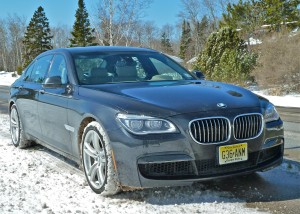
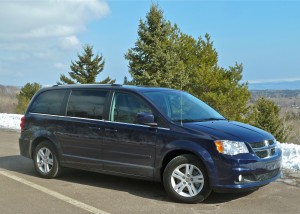
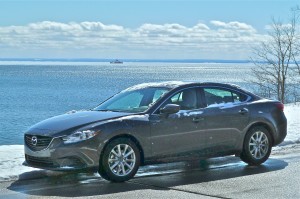
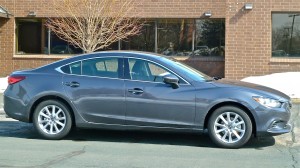
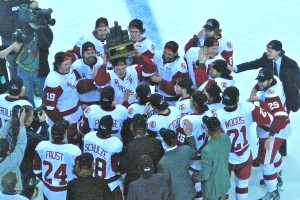
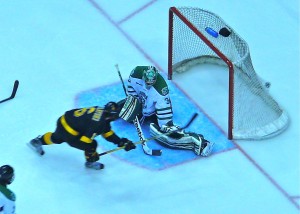
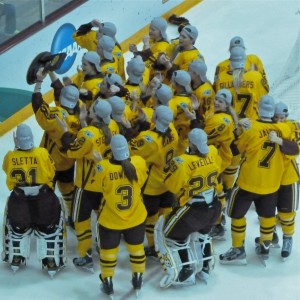
 John Gilbert is a lifetime Minnesotan and career journalist, specializing in cars and sports during and since spending 30 years at the Minneapolis Tribune, now the Star Tribune. More recently, he has continued translating the high-tech world of autos and sharing his passionate insights as a freelance writer/photographer/broadcaster. A member of the prestigious North American Car and Truck of the Year jury since 1993. John can be heard Monday-Friday from 9-11am on 610 KDAL(www.kdal610.com) on the "John Gilbert Show," and writes a column in the Duluth Reader.
John Gilbert is a lifetime Minnesotan and career journalist, specializing in cars and sports during and since spending 30 years at the Minneapolis Tribune, now the Star Tribune. More recently, he has continued translating the high-tech world of autos and sharing his passionate insights as a freelance writer/photographer/broadcaster. A member of the prestigious North American Car and Truck of the Year jury since 1993. John can be heard Monday-Friday from 9-11am on 610 KDAL(www.kdal610.com) on the "John Gilbert Show," and writes a column in the Duluth Reader.